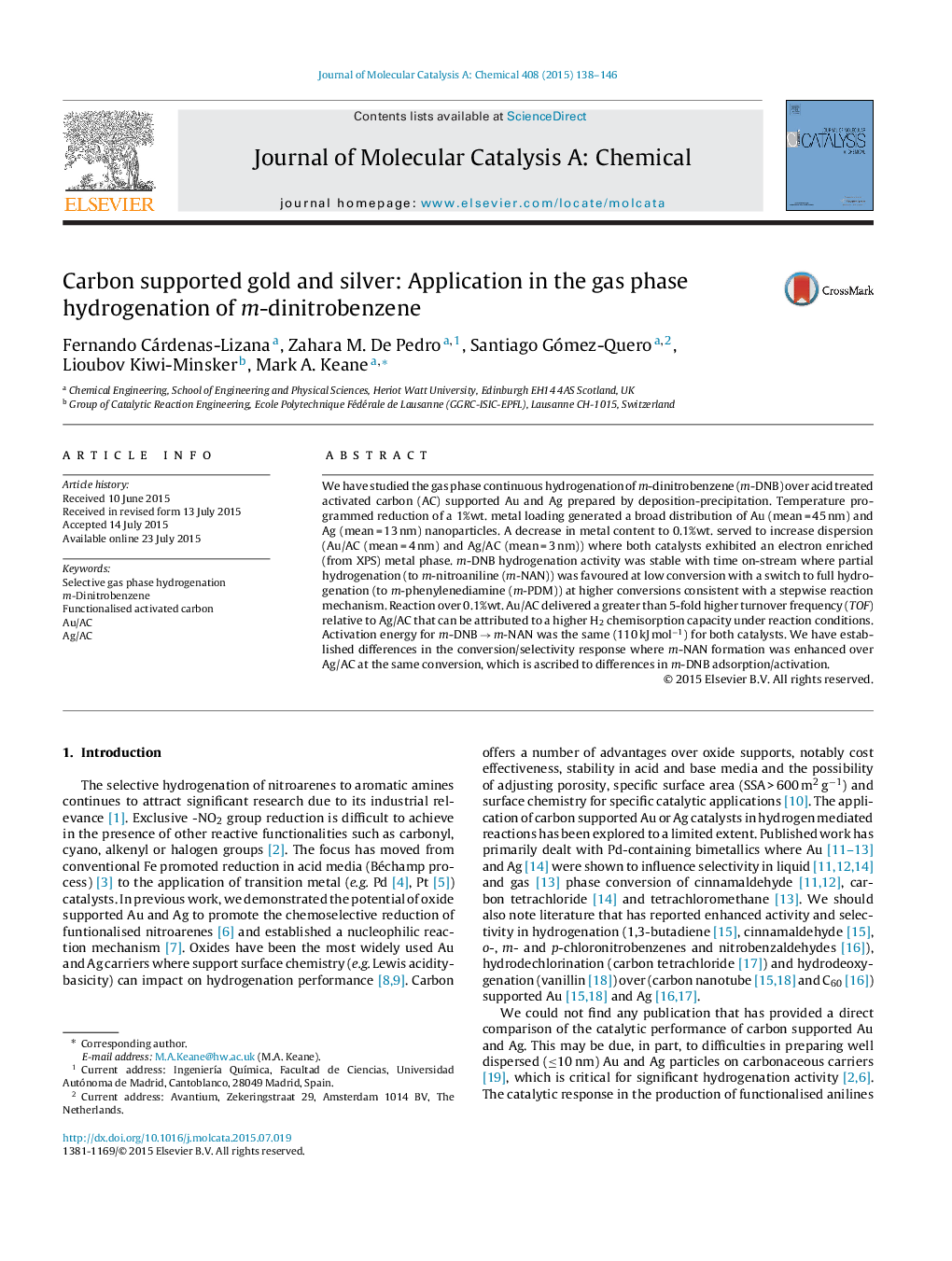| Article ID | Journal | Published Year | Pages | File Type |
|---|---|---|---|---|
| 64869 | Journal of Molecular Catalysis A: Chemical | 2015 | 9 Pages |
•Stable time on-stream –NO2 reduction activity for AC supported Au and Ag.•Electron rich 3–4 nm (0.1%wt.) Au and Ag on AC from TEM/XPS analysis.•Higher m-dinitrobenzene TOF over Au/AC linked to greater H2 chemisorption capacity.•Enhanced partial -NO2 reduction over Ag/AC at higher conversions
We have studied the gas phase continuous hydrogenation of m-dinitrobenzene (m-DNB) over acid treated activated carbon (AC) supported Au and Ag prepared by deposition-precipitation. Temperature programmed reduction of a 1%wt. metal loading generated a broad distribution of Au (mean = 45 nm) and Ag (mean = 13 nm) nanoparticles. A decrease in metal content to 0.1%wt. served to increase dispersion (Au/AC (mean = 4 nm) and Ag/AC (mean = 3 nm)) where both catalysts exhibited an electron enriched (from XPS) metal phase. m-DNB hydrogenation activity was stable with time on-stream where partial hydrogenation (to m-nitroaniline (m-NAN)) was favoured at low conversion with a switch to full hydrogenation (to m-phenylenediamine (m-PDM)) at higher conversions consistent with a stepwise reaction mechanism. Reaction over 0.1%wt. Au/AC delivered a greater than 5-fold higher turnover frequency (TOF) relative to Ag/AC that can be attributed to a higher H2 chemisorption capacity under reaction conditions. Activation energy for m-DNB → m-NAN was the same (110 kJ mol−1) for both catalysts. We have established differences in the conversion/selectivity response where m-NAN formation was enhanced over Ag/AC at the same conversion, which is ascribed to differences in m-DNB adsorption/activation.
Graphical abstractFigure optionsDownload full-size imageDownload high-quality image (204 K)Download as PowerPoint slide
